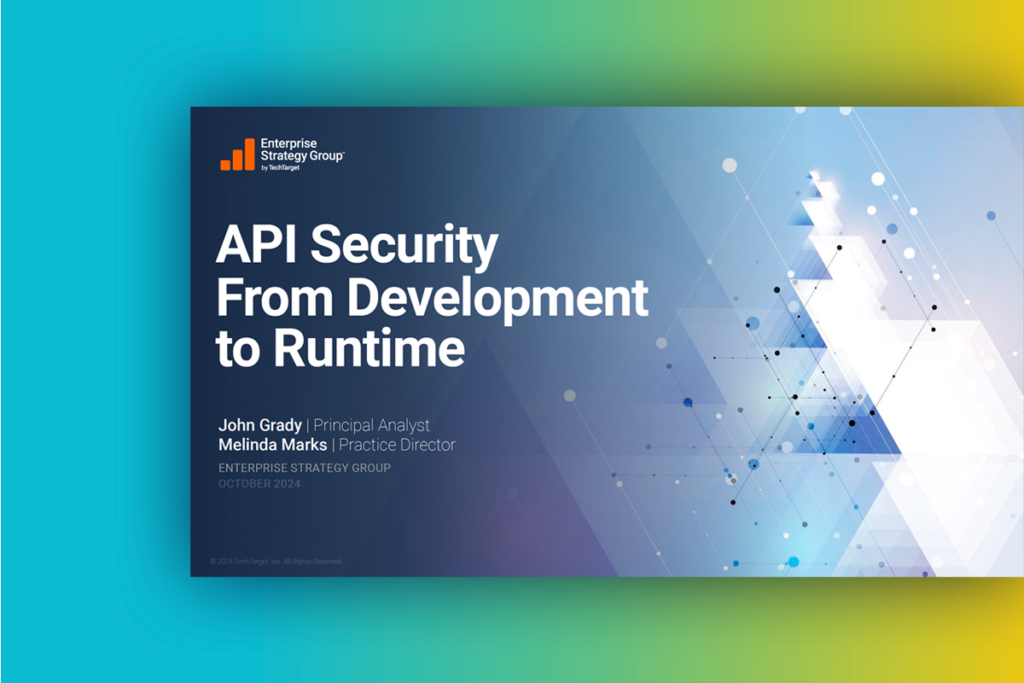A massive segment of organizations’ digital footprint today is built around internal and external APIs. As more IT leaders realize and acknowledge the size of APIs’ influence, it’s become clear that new methods are needed to secure those APIs.
While many companies today use the term “API security” to describe their offerings, these solutions often handle only a few of the many functions needed to protect APIs from becoming a source of vulnerability that can be used as an attack vector. A new mindset, a new category, and a proper end-to-end solution are needed; this is where Unified API Protection comes in.
First, it’s vital to quantify why Unified API Protection has become so essential.
APIs: The Double-Edged Sword of Digital Business
The impact of rapid API adoption on the business world has been mixed, introducing both functionality and risk. This dual nature breaks down as follows:
- On the one hand, APIs have become a development tool of choice in reaction to application componentization, competitive business dynamics, and user expectations for seamless app experiences. On the other hand, APIs have delivered velocity and competitive advantage to companies of all kinds as part of their development tool kit.
- On the other, APIs are highly visible, and their well-defined nature has made them an irresistible target for attackers. Some companies are implementing APIs without security practices or authentication in place and not conforming to required API specifications. In some cases, sensitive data is being exposed as clear text, placing compliance and overall data security at risk.
Organizations need a way to bring their API usage under control, all while still reaping the speed and competitiveness benefits.
Unknown, Unprotected, and Unmitigated API Risk
Initial efforts to protect organizations’ APIs tend to fall short because the chosen methods can’t cope with the scale of API use and related risk today. Extending web application firewalls and API gateways or using Gen 1 API Security solutions to cover a company’s known API risk surface isn’t enough, largely because:
- Unknown and “shadow” APIs are not discovered by these solutions. Legacy approaches API security often lack a way to uncover APIs that are not officially known or only visible through an outside-in or edge-based inside-out view and analysis of the business’s technology footprint.
- Protection options may be inadequate. Existing detection systems are often difficult to deploy, easy for threats to avoid, and hard to scale. Moreover, since many of these solutions can’t discern and natively block threats in real time, they leave large security gaps.
IT security teams trying to protect their organizations with these solutions can fall behind, performing too many manual tasks and operating at cross purposes with developers and security operations personnel. Modern API use demands a similarly modern solution rather than a cobbled-together legacy version.
The Answer: Unified API Protection
After struggling with limited security offerings, it’s natural for a new mindset to take hold in IT security departments: Today’s organizations must protect the entire API footprint from all security and compliance risks and threats. Unified API Protection solutions are meant to deliver this experience.
Unified API Protection differs from fragmented or incomplete API security offerings because it’s a methodology designed to account for multiple types of risk and, more importantly, to provide resolution. These solutions are based on three functional pillars:
- Discover: Companies can’t adequately protect their risk surfaces until they know the existence and location of every API in use, including “shadow” APIs. This requires both inside-out and outside-in detection efforts.
- Detect: Ongoing real-time detection of API activity is essential. A comprehensive system should be able to provide compliance and risk monitoring alongside advanced threat detection that incorporates artificial intelligence and global API threat intelligence to find well-concealed attacks.
- Defend: While some API security tools stop alerting security personnel of threats, a true Unified API Protection solution also includes native real-time remediation. Blocking out harmful traffic and stopping even sophisticated and persistent threats should be part of the package, keeping organizations safer with less manual action needed or reliance on third-party tools such as a WAF to avoid vendor lock-in and lowest denominator security.
There are six individual steps associated with achieving these three pillars of Unified API Security:
- Inside-out discovery: “Knowing the unknown” and automatically detecting shadow APIs.
- Outside-in inventory: Detecting all known and managed APIs and connections without their prior knowledge of existence.
- Compliance monitoring: Ensuring real-time compliance with standards and specifications.
- Threat detection: Scanning for potentially malicious activity, including well-disguised attacks and business logic abuse.
- Threat prevention: Defending data and infrastructure through alerting, stealthy mitigation, and real-time blocking of attacks without relying on any third-party tools.
- Ongoing testing: API protection should become a part of development, shifting security left and preventing risky code from entering production.
Cequence Security’s solutions are designed to deliver Unified API Protection and provide the comprehensive security needed to cope with the way APIs are leveraged today.
Continuous Protection for Ubiquitous API Connectivity
By providing continuous, real-time, end-to-end API risk discovery, detection, and defense, the Cequence Unified API Protection solution can allow IT teams to deliver secure business continuity without stress, worry, or lost efficiency.
This solution can:
- Deliver visibility of the full runtime API inventory, including risk and compliance states.
- Monitor suspicious and malicious traffic, as well as risky changes to any API.
- Respond to threats in real-time with stealthy blocking while cutting down on false positives and manual intervention.
The solution delivers this state of API protection without getting in the way of development or operations efforts, so the whole organization is united in working more securely, even as new APIs continue to roll out.
Ready to put Unified API Protection to the test? Request a demo and a FREE API security assessment.
Sign up for the latest Cequence Security news
By clicking Subscribe, I agree to the use of my personal data in accordance with Cequence Security Privacy Policy. Cequence Security will not sell, trade, lease, or rent your personal data to third parties.




